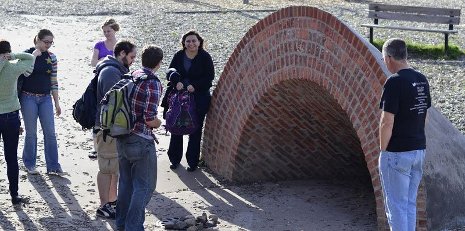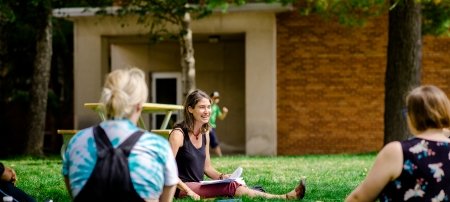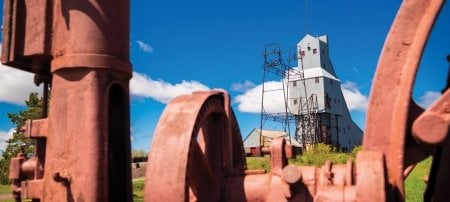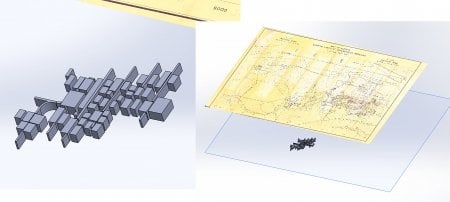Class Investigates Tapping Mines for Geothermal Heat in Calumet

In a great example of serendipity, the mineshafts that propelled Calumet to the pinnacle of copper mining could possibly be used once again-- thanks to mine water--to heat buildings.
A class at Michigan Technological University has studied the social feasibility of tapping into mine water underneath Calumet for geothermal energy. They’re presenting their findings this week at the Calumet-Laurium-Keweenaw (CLK) School Commons.
Richelle Winkler, assistant professor of social sciences, taught the class of undergraduates and graduate students. She says that they learned much from the project.
“This was a real-world research project,” Winkler explains. “The students learned a lot about the community: how they work together, how to empower people to ask questions and get excited about a project.”
As Winkler’s group looks at the social aspects, an Enterprise team is looking at the technical side. That group is advised by Jay Meldrum, director of the Keweenaw Research Center, which is currently using mine water geothermal heating and cooling.
“So, we have that precedent, too,” Winkler says. Her class, however, is focusing on development of consensus and on political issues. For example, “There are 37 shafts in the area, and many believe that the mine water is a ‘public-pool resource’ that belongs to everyone,” in part, she says, because many of the people and their ancestors worked the mines.
“But some of the shafts are on private property, and some are owned by municipalities. So, the question becomes, how do we get access? Who pays for it? How would it work? It’s complicated,” Winkler points out.
The project also helps celebrate the cultural legacy of the area, Winkler says. Instead of being an environmental problem, the legacy of mining could be used for something to benefit both the community and the environment by lowering energy costs and reducing the carbon footprint.
“We don’t, however, tell the community what they should do,” she says. “We only hope to encourage discussion, help them think it through, give them insight and some tools.”
The community is already using mine water for watering the grass at Agassiz Field, CLK’s football field.
“There are several key buildings, where we’re calculating need to determine the distance to the shafts, including the CLK schools, near Calumet No. 3 shaft,” Winkler says. She wants to give the people the information they need and let them decide.
Michigan Technological University is an R1 public research university founded in 1885 in Houghton, and is home to nearly 7,500 students from more than 60 countries around the world. Consistently ranked among the best universities in the country for return on investment, Michigan's flagship technological university offers more than 185 undergraduate and graduate degree programs in science and technology, engineering, computing, forestry, business, health professions, humanities, mathematics, social sciences, and the arts. The rural campus is situated just miles from Lake Superior in Michigan's Upper Peninsula, offering year-round opportunities for outdoor adventure.




Comments